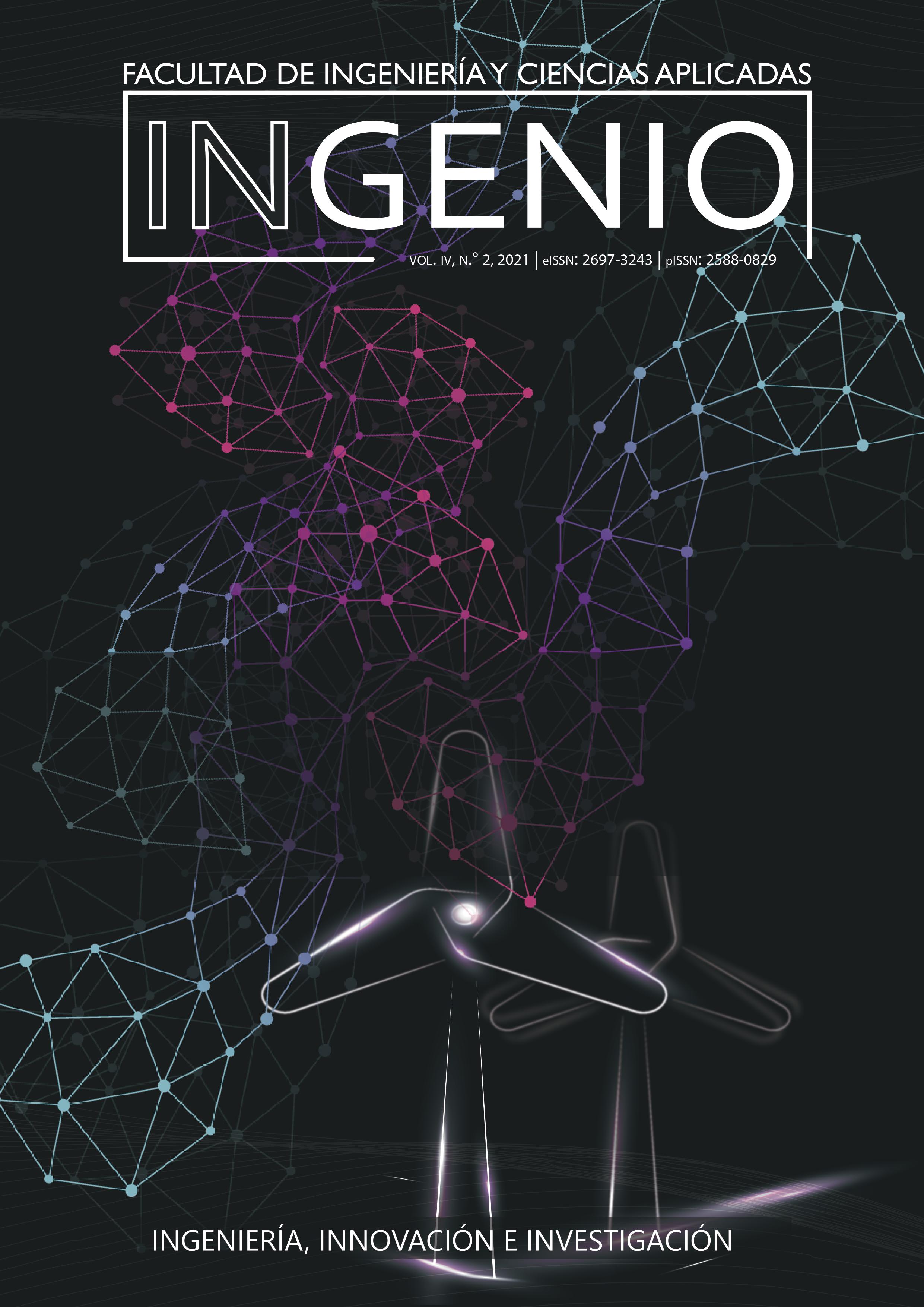Mathematical Analysis of the Suppression of Atmospheric Impulses in Distribution Systems
Main Article Content
Abstract
The study and analysis of the suppression of atmospheric impulses to the lightning rod of an Electrical Distribution System was carried out, based on the comparison of theoretical results developed with the Matlab – Simulink software and the experimental ones carried out in the High Voltage laboratory of the Salesian Polytechnic University of Ecuador, in order to understand the electrical and mathematical behavior of the protection to the distribution system. The equivalent circuit of the IEEE frequency-dependent model "Modeling of metal oxide surge arresters”was used. The mathematical analysis consisted in constructing the equations of the equivalent circuit and using the Matlab tool that extrapolates with the best approximation the behavior of the nonlinear resistances of the beam, in addition, the atmospheric impulse generating circuit defined in the ANSI/IEEE Standard 4-1995 standards required for suppression was modeled.
Downloads
Metrics
Article Details

This work is licensed under a Creative Commons Attribution-NonCommercial-NoDerivatives 4.0 International License.
References
Aguirre Alonso, A. A. (2015). Diseño del manual de procedimientos de prácticas para el laboratorio de alta tensión de la Universidad Politécnica Salesiana sede Guayaquil
Jiang, Q., Li, X., Wang, B., & Wang, H. (2012). PMU-based fault location using voltage measurements in large transmission networks. IEEE transactions on power delivery, 27(3), 1644-1652.
Lazo Cárdenas, J. F., & Vélez Tenemaza, N. A. (2016). Estudio para la implementación de pararrayos en sistemas de distribución de media tensión (Bachelor's thesis).
Guacho Vizuete, J. P., & Gutiérrez Navas, E. J. (2015). Estudio de factibilidad de un plan de contingencia ante una posible suspensión de energía eléctrica en la ciudad de baños frente a un desastre natural a nivel de 13.8 kv en la Empresa Eléctrica Ambato Regional Centro Norte SA (Bachelor's thesis, LATACUNGA/UTC/2015).
Aguas Romero, L., & Jiménez Chinchilla, R. (2013). Guía de trabajos independientes para sistemas eléctricos de potencia (Doctoral dissertation, Universidad de la Costa CUC).
Rojas, A. H. (2012). Sistema de protecciones contra descargas atmosféricas en la línea eléctrica de la mina Yagrumaje. Cuba.
Velasco, J. A. (2013). Coordinación de aislamiento en redes eléctricas de alta tensión. España: McGraw-Hill España.
Naidu, M. S., & Kamaraju, V. (2013). High voltage engineering. Tata McGraw-Hill Education.
Fernández, F., & Díaz, R. Metal-oxide surge arrester model for fast transient simulations.
Nafar, M., Gharehpetian, G. B., & Niknam, T. (2011). A novel parameter estimation method for metal oxide surge arrester models. Sadhana, 36(6), 941-961.
Oramus, P., & Florkowski, M. (2014). Simulations of lightning overvoltages in HV electric power system for various surge arresters and transmission lines models. Przegląd Elektrotechniczny, 90(10), 137-140.
Benešová, Z., & Kotlan, V. (2013). Mathematical model of MOV surge arrester.
Rachidi, F. (2012). A review of field-to-transmission line coupling models with special emphasis to lightning-induced voltages on overhead lines. IEEE Transactions on Electromagnetic Compatibility, 54(4), 898-911.
Dau, S. (2012, September). Modelling of metal oxide surge arresters as elements of overvoltage protection systems. In Lightning Protection (ICLP), 2012 International Conference on (pp. 1-5). IEEE.
Villa, E. D. E. L. C. A., & Carrasco, E. D. E. L. C. A. (2010). Simulación con ATP de pararrayos para las lineas a 115 y 400 kv de Edelca.
Martinez-Velasco, J. A. Simulación digital de procesos transitorios en sistemas eléctricos de potencia.
Barbecho Chungata, R., & Cabrera Buestán, M. (2012). Aplicación de interruptores diferencialers para la protección eléctrica de instalaciones de baja tensión residenciales (Bachelor's thesis).
Páez Cedeño, L. G., & Villón Quezada, F. R. (2016). Modelación matemática de ondas viajeras generadas por descargas atmosféricas en sistemas de distribución desarrollado en el laboratorio de alta tensión de la UPS-Sede Guayaquil (Bachelor's thesis).





